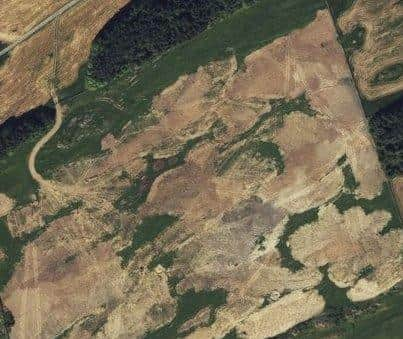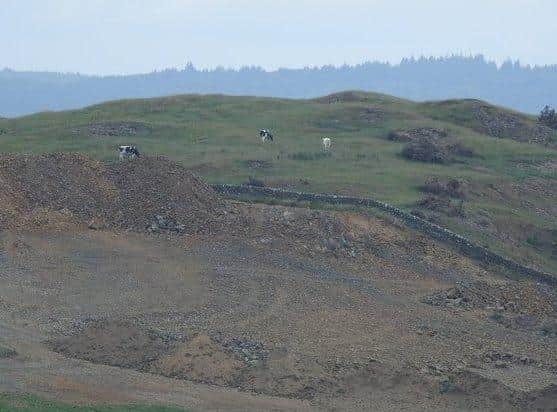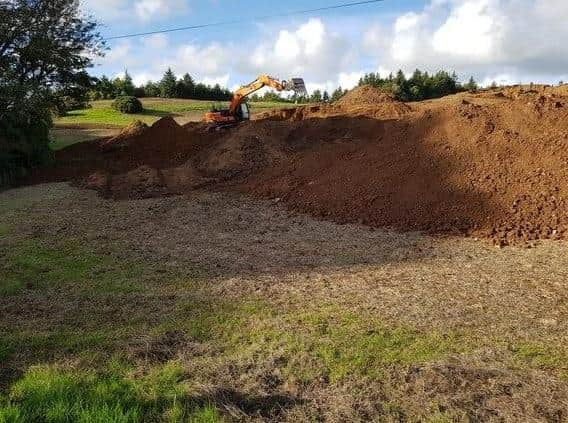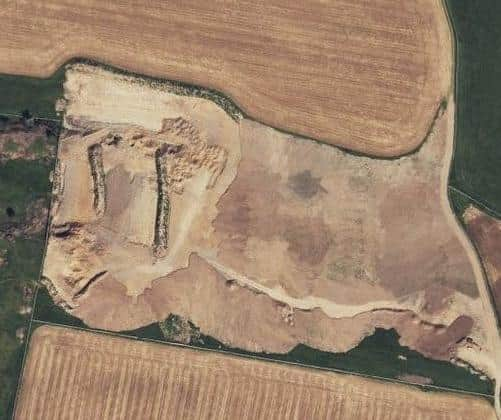Dumfries and Galloway countryside facing 'irreversible damage' due to farming regulation failure
Landscape unique to Scotland has suffered “irreversible damage” over several years due to a failure to uphold land regulation by public bodies, The Scotsman can reveal.
Thousands of cubic metres of land in Dumfries and Galloway, home to rocky outcrops and glacial moraines, have been churned up across farmland to level out fields to increase agricultural efficiency.
Advertisement
Hide AdAdvertisement
Hide AdThe activity, which has caused concern from both an environmental and archaeological perspective, has pushed residents and representatives of rural groups to speak out.


It has been claimed the field levelling is predominantly being carried out by farmers with large herds of dairy cattle that are kept indoors to generate slurry to be spread on fields for grass growth.
Since 2017, it has been against the law for landowners and land users to carry out work on agricultural land such as removing knowes (small hills), levelling fields, and removing dykes and hedges without an assessment from officials.
The threshold for when an assessment is required is triggered by multiple factors, including when there is an addition, removal or redistribution of a volume of earth or other material in relation to land that equals or exceeds 5,000 cubic metres. Examples of projects like this include scraping back topsoil, breaking up knowes, and moving rock and soil to level fields.
While it is not unusual for farmers to level out fields to a certain degree to, for example, improve crop growth, residents in the area have described the activity on their doorsteps as “wholesale level" that is more akin with quarrying. There are claims the activity has become “more radical and dramatic” over the years.


The Scotsman understands multiple farms in the area have not been assessed officially nor duly stopped from using earth shifting diggers “round the clock” to level out fields.
A reminder of the rules was sent out to farmers and landowners in December by the Rural Payments and Inspections Division (RPID). This came six years after the regulation – the Agriculture, Land Drainage and Irrigation Projects (Environmental Impact Assessment) (Scotland) Regulations 2017 – came into effect.
Sources claim some RPID officers have deliberately dragged their feet when enforcing environmental regulations and ignored complaints over this period due to personal connections with the dairy industry.
Advertisement
Hide AdAdvertisement
Hide AdThe reminder letter, seen by The Scotsman, acknowledged there had been “several recent breaches” of the regulations on farms across Scotland before setting out the legislation. It could mean thousands of cubic metres across Galloway’s fields that have been churned up have been done so illegally.


The Scottish Government said it had been made aware of recent activity in the Dumfries and Galloway area where restructuring projects had been undertaken, or proposed, to level out areas of land.
A spokesperson said: “Our RPID Dumfries Area Office has answered a number of queries from farmers and members of the public in terms of restructuring works, and have conducted on-site visits in a number of these cases to inspect activity or proposed activity.
“RPID has instigated recent communication with all farmers in the Dumfries and Galloway area given our awareness of recent restructuring activity to remind them of the need to consider the Environmental Impact Assessment regulations, and approach their local RPID office for guidance and support. That has generated further queries from the farming community, which we are addressing.”
Sources, however, have told The Scotsman that illegal work is still ongoing in 2024 and that RPID officers are failing in their duty to provide an online register of farms involved and a transparent inspection process.


While residents have been afraid to go on the record for fear of repercussions, former NatureScot director John Thomson said the concerns had been raised with the charity that he chairs – Action to Protect Rural Scotland.
He told The Scotsman: “The landscape in Dumfries and Galloway should not be able to change in the major irreversible way that is being done without having public authority interference.
"These rocky outcrops and glacial moraines are very much characteristic of Galloway. They are a defining feature here, so in that sense the personality and identity of the region is disappearing.
Advertisement
Hide AdAdvertisement
Hide Ad"I am very concerned about what has been going on because it’s been transforming the character of the area in a way that’s not good for the long term.”
Mr Thomson, who focused on land policy and covered the south-west of Scotland when working for NatureScot, said there had been “a reluctance to effectively enforce a lot of the environmental rules in agriculture because there’s a particularly high degree of sympathy in the relevant bits of government to the circumstance of farmers”.
He said: “You can understand why people have a degree of sympathy, but I think the farming community itself really needs to wake up to the fact that the world is going to change and it isn’t all about food production.” He said south-west Scotland was often ignored when it comes to the topic of land use.


Mr Thomson, a farmer himself, warned the field levelling was a manifestation of much bigger issues when it comes to the future of farming and land management.
Not only is the activity causing damage to the local flora and fauna and creating a bad feeling between the local farming sector and members of the community, but it could also have implications for the region’s economy, he said.
Mr Thomson said: "Agricultural alone doesn’t sustain the rural economy. The rural economy has increasingly diversified, which relates to tourism and leisure and to how areas are viewed as places to live and work.
"You really do need to maintain a good environmental image for your region if you want to maintain its long-term prosperity.
"Natural capital is talked about a lot at the moment, and that ties into the visual image of the area. If you damage the landscape, you’re damaging the natural capital possibilities.
"This homogenisation of the countryside is particularly depressing, especially when you live in a country where what makes its landscape interesting is its diversity.”
Comments
Want to join the conversation? Please or to comment on this article.